Hospitality, Respect, Pride and Family – My Week with the Blackfeet
by Todd Cannon
I nearly bolted from the sweat lodge before the first round was over. I must have looked as if someone had doused me with a bucket of water – a steady stream of sweat running down my head, torso, limbs. The heat and total darkness inside the sweat lodge was nearly unbearable for an Indiana boy who had never spent so much as ten minutes in the sauna at the local “Y.”
“That might have been my first and last round, “ I told the group as I wrung out the sweat-soaked washcloth that I was using to cover my mouth from the hot air. Sam said, “It gets easier. The first round might be the hardest for you. Try to relax and put your mind somewhere else. I’m so busy praying…I don’t even feel it.”
I had met Sam Aimsback three days earlier at a work site on our volunteer project on the Blackfeet Indian Reservation in Browning, Montana, with my “servant-learner” teammates. Sam enthusiastically introduced himself as our “Indian guide.” We liked him right away. A tall, amiable, garrulous man with an intense gaze and quick smile, Sam entertained and informed us about life on the “rez” and Browning, the political and business hub of the Blackfeet Indian Reservation. So it was on a Tuesday evening, not long before sunset, that I found myself inside an Indian (a perfectly acceptable term on the reservation) sweat lodge. After a short break, I convinced myself to go back in for round two. “I’ll just take it round by round, ” I said to myself or to anyone else who might have been within earshot.
As I entered, I heard Sam say, “Just wait until the third round…it’s called the Thunder.” The subtle warning was quickly followed with a good-natured chuckle, but somehow it didn’t seem to reassure me as I stepped back into the darkness.
The Blackfeet Indians were once referred to as “the Lords of the Great Plains.” Their ancestral territory originally covered much of present day Montana, extending to the Yellowstone River in Southern Montana to the North Saskatchewan River in Canada. The Rocky Mountains formed a natural border to the West. In recent times, the Blackfeet have not faired so well. Time and politics have taken a toll on the Blackfeet, their land and culture. Today the Blackfeet Indian Reservation covers approximately 1.5 million acres, a chunk of land that lies south of Canada and borders Glacier National Park on the East.
I traveled to the Blackfeet Reservation with the help of a Lilly Endowment Teacher Creativity grant. My intentions were to dispel some stereotypes, to absorb as much culture as I could in a short amount of time, and to listen.
I chose the international volunteer organization Global Volunteers. Global Volunteers has a long-standing relationship on the Blackfeet Reservation and has been sending teams to Browning since 1999. I knew the goodwill they established would help me make a stronger connection with the community members than if I were simply a tourist. Indeed, this was not a vacation, and volunteering with the program is not a free ride. Expenses vary from site to site depending on location and time spent at the location. Volunteers are also responsible for their own round-trip airfare or transportation. Lodging and meals are included in the program fee.
We were housed in classrooms at the Early Head Start building in Browning. Showers were communal, located in the adjoining public pool facility. Not exactly the Hilton, but that is not really the point either.
I was part of the 56th volunteer team working in Browning. Stemming mostly from middle-class backgrounds, the volunteers on my team were a unique mix of talent and age, hailing from various locales across the country. Our youngest member, age 9, was part of a mother-daughter-granddaughter trio from New York. The oldest, age 71, was the second of our team leaders who was reared in France but has been living in the United States for several years. There was also a family of four from Iowa, a nurse and farmer’s wife from Wisconsin, two recent college grads from Michigan and Vancouver, and a college sophomore from Georgia.
Although our motives for going to the “rez” might have been different, our goals were essentially the same: to help and to learn. Time has a way of intensifying experiences between strangers who share common goals, and by the end of the week, all of us felt as if we had known each other longer.
The workday on the reservation began around 8 a.m. and usually ended around 3:30 p.m. In the morning we set out in pairs or small groups. Typical work assignments included a landscaping project at the Blackfeet Community College, digging out a patio at the elderly care center, delivering meals to elders on the reservation, tilling a community garden, and playing bingo and offering companionship to the elders at the care center.
Evenings were free-time, but the group usually elected on cultural activities as suggested by our team leader or Sam. One was a trip to Glacier National Park, a true national treasure full of mountains, lakes, waterfalls, and wildlife. Another evening we visited the home of Calvin Weatherwax and his wife as they shared herbal teas and explained the small business they run from their home that specializes in naturally made products such as lotions, lip balms, ointments and creams.
One evening we received a visit from Joe Bremner and his son Joseph. Joe, a small business owner in Browning, spoke to us about the current affairs on the reservation. He informed us about ongoing boundary disputes, water rights, and lease agreements that the Blackfeet are still fighting with the United States government. He expressed his concern about the dying Blackfeet culture and language. A Blackfeet himself, Joe didn’t begin to immerse himself in the Blackfeet culture until fifteen years ago. Like many Indians on the reservation, he was raised Catholic, a still deeply ingrained remnant left behind by missionaries from earlier times and a sticking point for some Indians. Soft spoken and passionate, his voice followed the gentle cadence that I came to notice most Indians using – rhythmic, metrical, often with a stress on the last word. Blackfeet affairs are clearly his passion and concern. He laments the fact that there are few Indian-owned businesses in Browning; as a result he offers business advice and support to young Indian entrepreneurs on the reservation. His message is one that looks to the future: “There is a sense of entitlement on the reservation. We [the Blackfeet] can’t depend on the government. We need to get over that. We have to help each other.”
To ensure that that Blackfeet culture and language remain alive and well within his own family, he sends his son, Joseph, to one of the two private elementary immersion schools on the reservation. Less than 3 percent of Blackfeet are fluent in their own language. As the evening winded down, Joseph sang (or chanted, rather) a few traditional Blackfeet songs for the group. A handsome young man with a long braid extending to his lower back, he sang with confidence; his eyes fixed on a spot on the floor, hypnotic, trance-like, invoking his ancestors. Joe ended the night by playing two songs on his flute. The first song, a melodic Indian hymn, the second, a rendition of Amazing Grace with obvious Blackfeet influence. It was apparent that he had played this on more than one occasion. Some volunteers hummed a few bars to themselves; his execution was flawless until near the very end. He paused for a beat, quietly cleared his throat, wiped the lower lids of his eyes with his forefinger, and humbly apologized for the interruption. It was a deeply moving experience for all of us.
On our last night on the reservation, we received a late night visit from our driver Sam and his wife. He wanted to stop by to apologize for not being around the past two days (his auntie had died a few days earlier) and to tell us all goodbye and to thank us for the work we did. It was a nice reaffirmation for why we were there after a long week where progress wasn’t immediately noticeable. But we all took comfort in knowing that we met our goals and that teams 57, 58, and beyond would continue the work laid out before them as they, too, follow the Global Volunteers’ philosophy of “waging peace through service.”
As we were saying our goodbyes in the hallway, we heard what sounded like the wind catching a storm door. Sam looked around nervously. As he turned to search for the source of the noise, our youngest volunteer, Jamie, asked where he was going. Sam shot a quick glance at both his wife and Jamie’s mother. Their looks told him not to say anything that would scare the girl. He bent down quickly, and looking her right in the eyes, he said quite sincerely and seriously, “It takes them [the dead] four days to pass. My auntie might have followed me here.” And he walked away.
My laughter alone echoed through the hallway. I laughed not only because I took some pleasure in seeing the precocious nine year old speechless for the first time since she arrived, but also because I knew there were many more mysteries to the Blackfeet than I had ever imagined. We left Browning early Saturday morning. It had only been a week. I can only hope that the memories and experiences that were carved out of those rocks and tillers and shovels and stories will remain as timeless and pristine as the mountains to the West as I share them with family, friends, and students.
I received an email a few days ago from Sherry, one of the volunteers from Iowa. She wished everyone on team 56 a happy Fourth of July, and she ended her letter with, “Let’s meet again sometime on the ‘rez’.” I’m sure I will go back there someday – to that place in Northern Montana where the surnames Stillsmoking, Tailfeathers, Running Crane, and Afterbuffalo are as well-known as Smith, Jones, and Williams in my community. The Blackfeet have had more than their fair share of problems, but during my brief time on the rez, I saw nothing but hospitality, respect, pride, and a strong sense of family – those same things we all admire and would like to see from our own families. Yes, the next time I’ll take my children along, and we’ll “sweat” together.

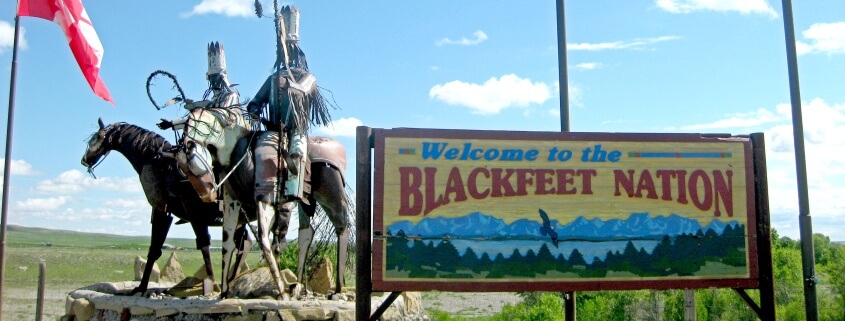
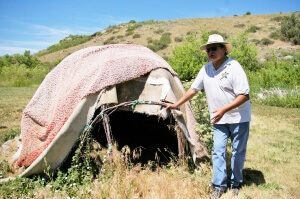
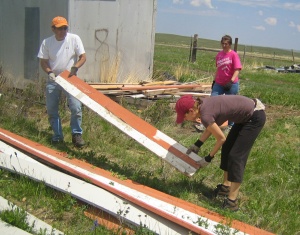
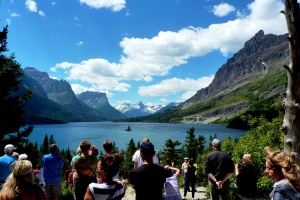
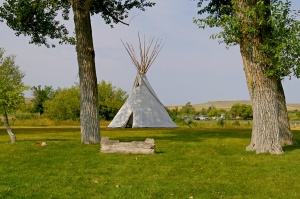
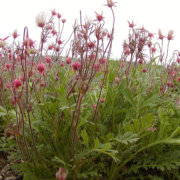
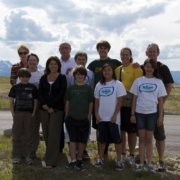
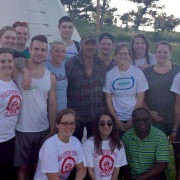

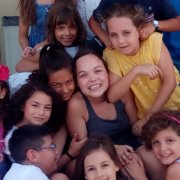


Leave a Reply
Want to join the discussion?Feel free to contribute!